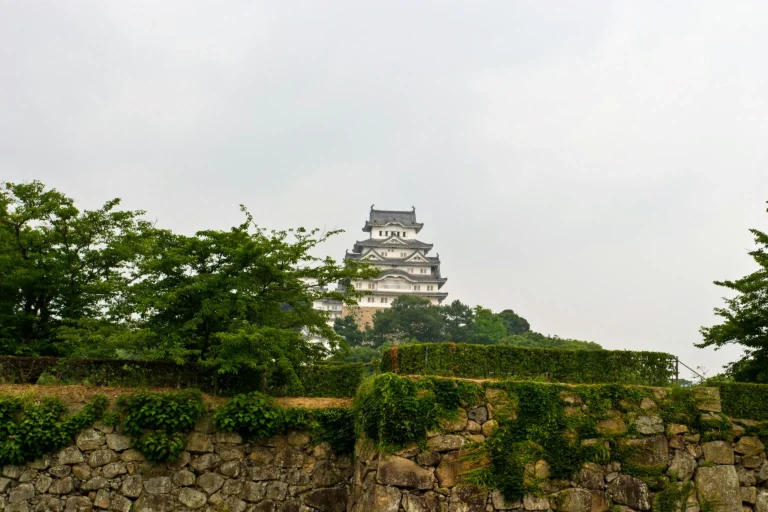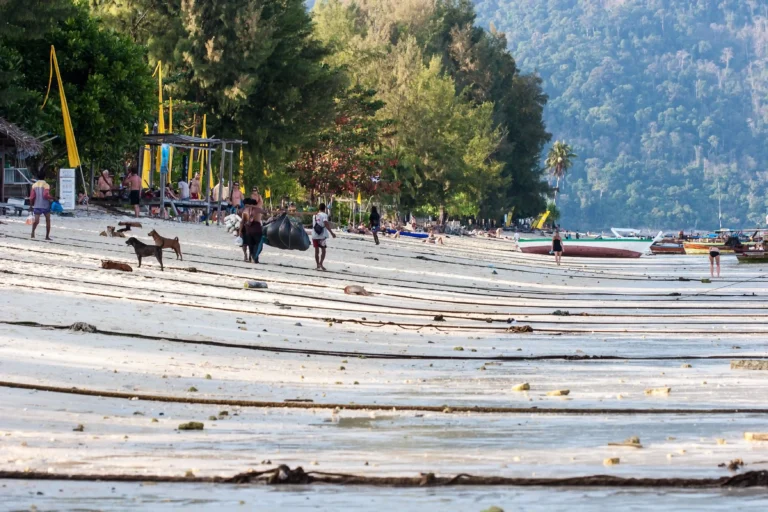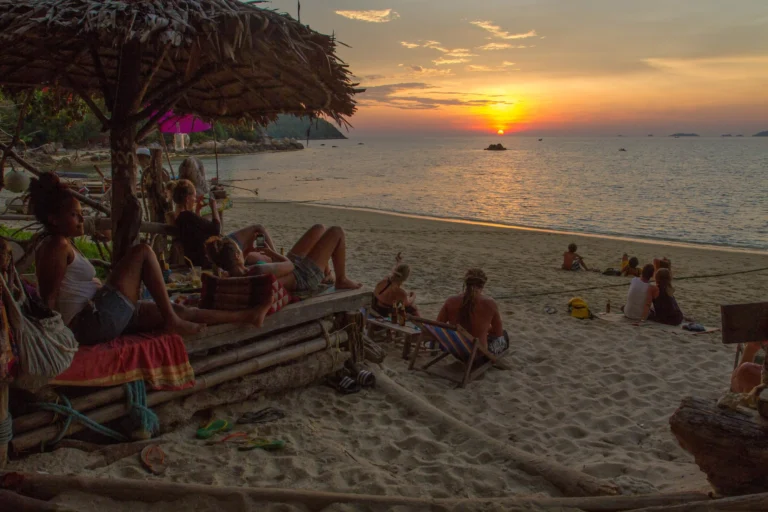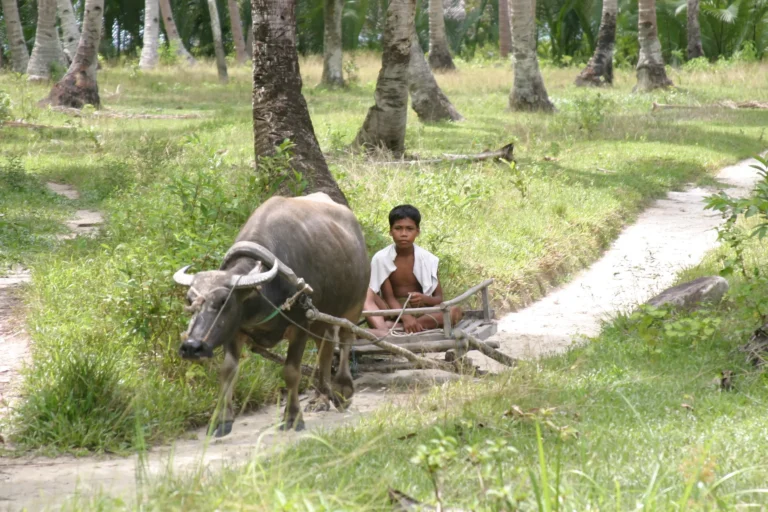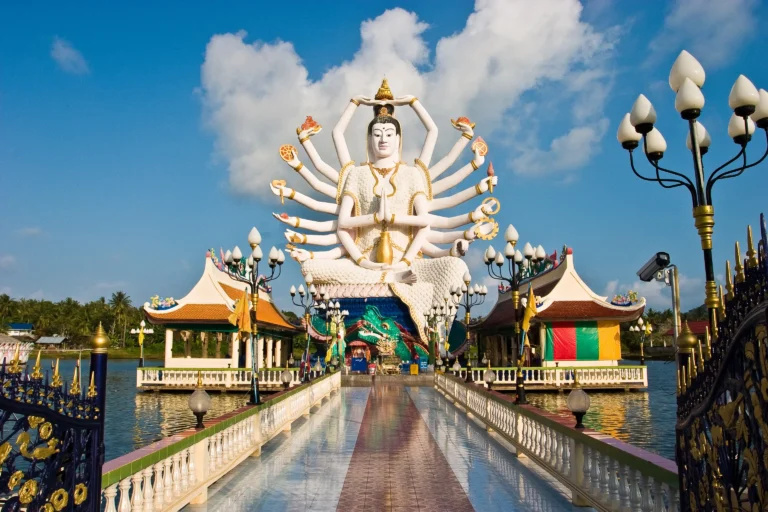As we did not have breakfast in the hotel, we again bought coffee and sandwiches from Kyoto Station and went to the bullet train, which took us one hour to Himeji. The main attraction in Himeji is the castle—a UNESCO World Heritage site, which is about a 15-minute walk from Himeji station. The castle is a magnificent building on the top of the hill, surviving in its original form. The high surrounding white walls make for an awe-inspiring view of the town. Himeji Castle has a five-story main donjon and three smaller donjons. Himeji is an excellent example of the typical Japanese castle, containing many of the defensive and architectural features most associated with Japanese castles.
This day was cloudy again in the castle; it even rained. Despite the rain, we were pleased that we chose to visit Himeji Castle. It is unique, as the original castle still stands today. Many other castles in Japan are modern reconstructions with ferroconcrete walls and interior elevators, as the majority of Japan’s wooden castles were destroyed in air raids in World War II. In Himeji, we stepped up on old wooden stairs. The stairs were surprisingly high, although local people were short, and so were shoguns.
We have purchased the combo ticket to visit Himeji Castle and Nishi-Oyashiki-Ato Garden. We visited the neighboring garden afterward—plenty of trees and shady spaces covered with moss, pools, and bridges. I was surprised to learn that the greens had only been constructed in 1992 using the gardening techniques of the Edo period (ca 1600–1860). Walking there, it is easy to think that the garden has been there as long as the castle. Compared to other parks we saw in Japan, this particular one is nothing special and may not be worth a special visit.
In the Shinkansen, we wrote the postcards to send (writing was possible only at stops or near those). The souvenir shops do not sell stamps. In Himeji, the post office was very close to the attractions (only 5 minutes from the castle’s first bridge), so we bought the stamps (80 yen for Europe) and put the cards in the mailbox. The first card was received only after three days—speedy service.

After a 55-minute ride, we were back in Kyoto, and the time was 4 PM. We walked in the South Higashiyama area. First, we went to the Sanjusangen-do temple. This temple is famous for its 1001 statues of the Buddhist deity, Juichimen-senjusengen Kanzoen, often called by the simplified name “Kannon.” One thousand statues of Kannon and one gigantic seated figure in the center were an exceptional view. Taking photos inside the main hall was not allowed. The statues look like they are made from bronze, but they are made of Japanese cypress and leafed with gold. 124 Kannons were made in the 12th century and 876 in the 13th century. They are called “Important Cultural Properties” or “National Treasures.”
The time was already 5 PM, so most temples were closed. We still wanted to walk around the area and found one temple, which was open, and nobody asked for an entrance fee. This temple had a beautiful garden and lovely houses. When we walked there, it started to rain quite heavily. We went to cover ourselves under the roof of the Bellhouse. Sitting there in the enjoyable warm weather with warm rain was quite cozy, and sharing my thoughts of the day.
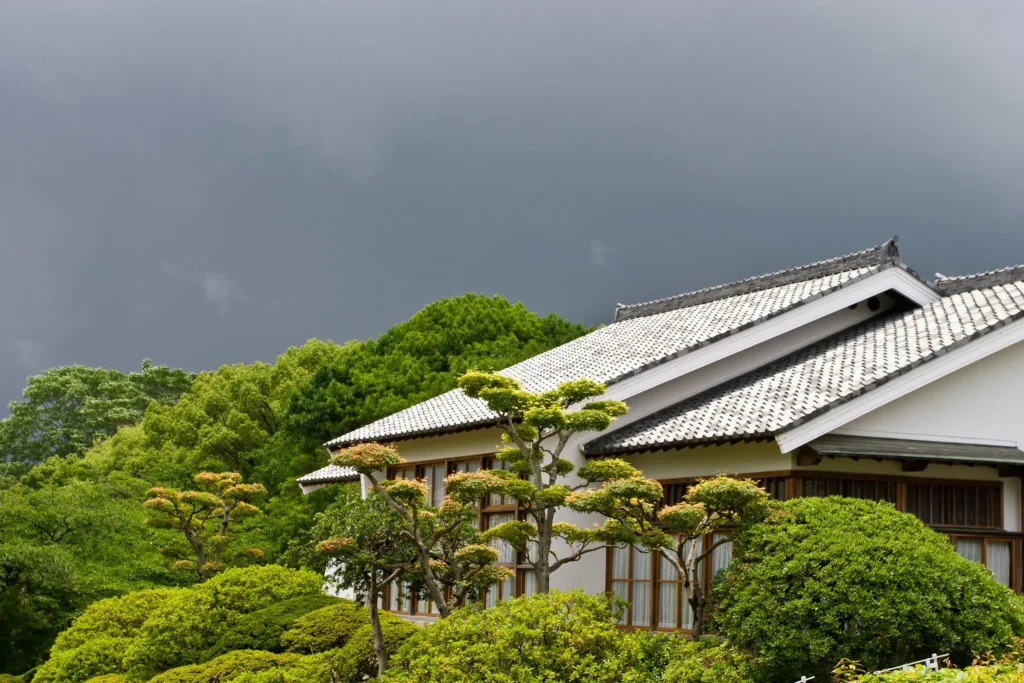
When the rain stopped, we walked to our hotel, took a shower, and went to find the best sushi restaurant in Kyoto, according to the Lonely Planet guidebook—Den Shichi. The sushi bar is a little bit away from the usual tourist routes, but you can go there quickly by bus numbers 205 or 28 from Kyoto station. The ride to Nishioji Shijo takes about 15 minutes. The bar stands on the main road, but as this is not a very touristic place, the sign outside is not in English. We asked local people where it was. One lady showed us: “See, it’s there,” and she pointed to the signboard. Unfortunately, there were many signboards with Japanese hieroglyphs. At least we got the direction. I do not know if they changed them, but at least on that day, Den Shichi had green curtains at the door. Den Shichi is a trendy place. There was no place for us. The lady at the door asked us to come back after 20 minutes. We returned and got to the place, but by that time (7:20 PM), there was even a line outside. We can only agree that Den Shichi is an excellent sushi bar and maybe the best during our Japan trip. A sushi dinner for two with Miso soup and beer costs 4500 Yen.
Related reading:
- Hiroshima, island of Miyajima, Peace Memorial Park
- From Kyoto to Arashiyama. Visiting Kinkakuji Temple
- Nara, the historical capital of Japan; Northern Higashiyama
- Staying in a ryokan in Kyoto and visiting Gion Corner
- Day Three in Tokyo – Senso-Ji Temple and Odaiba
- How to spend three days in Tokyo?
- Day Two in Tokyo – Ginza and Roppongi Hills
- Tips and recommendations for traveling to Japan
- Ohara, a rural glimpse of Japan
